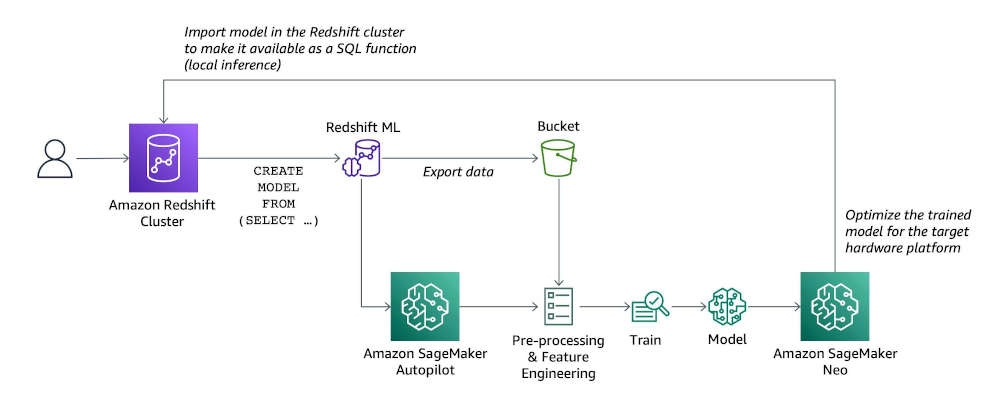| Amazon Redshift ML Now Generally Available |
| Written by Kay Ewbank | |||
| Wednesday, 02 June 2021 | |||
|
Amazon Redshift ML is now generally available and can be used to create, train, and deploy machine learning models directly from a Amazon Redshift cluster. Redshift is Amazon’s cloud-based petabyte-scale data warehouse service. Redshift was originally based on ParAccel technology from Actian (formerly known as Ingres), which Amazon acquired in 2013.
Redshift data can be analyzed using standard SQL-based tools and business intelligence applications. Queries can be distributed and parallelized across multiple nodes, and Amazon has automated most of the common administrative tasks associated with data warehouse management. Amazon also offers Advanced Query Accelerator (AQUA) for Amazon Redshift, a distributed and hardware-accelerated cache that Amazon says means Redshift can run up to ten times faster than any other cloud data warehouse by carrying out a substantial share of data processing in-place on its hardware-accelerated cache.
The new machine learning tools follow the 'make it easy' principle. To create a machine learning model, you use a SQL query to specify the data you want to use to train your model, and the output value you want to predict. After you run the SQL command to create the model, Redshift ML exports the specified data from Amazon Redshift to your S3 bucket and calls Amazon SageMaker Autopilot to prepare the data. SageMaker is a fully managed service for the machine learning process. It includes a web-based IDE for complete machine learning workflows which is designed to allow developers to build, train, tune and deploy their models from a single interface. Redshift ML uses SageMaker for pre-processing and feature engineering. You then select the appropriate pre-built algorithm, and apply the algorithm for model training. You can optionally specify the algorithm to use, for example XGBoost. Redshift ML handles all of the interactions between Amazon Redshift, S3, and SageMaker, including all the steps involved in training and compilation. When the model has been trained, Redshift ML uses Amazon SageMaker Neo to optimize the model for deployment and makes it available as a SQL function. You can then use the SQL function to apply the machine learning model to your data in queries, reports, and dashboards. Redshift ML is available now.
More InformationRelated ArticlesSagemaker Studio - An IDE for Machine Learning Amazon's Giant Push Into Machine Learning Amazon Redshift Ready For Data Amazon RDS Adds Replication Feature
To be informed about new articles on I Programmer, sign up for our weekly newsletter, subscribe to the RSS feed and follow us on Twitter, Facebook or Linkedin.
Comments
or email your comment to: comments@i-programmer.info |



